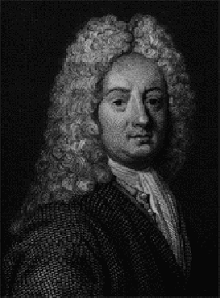Thomas Forster

Thomas Forster (29 March 1683 – October 1738) was a Northumbrian politician and landowner, who served as general of the Jacobite army in the 1715 Uprising.
Life
He was a member of the prominent Forster family of Bamburgh and Adderstone Hall, the son of Thomas Forster (1659-1725) of Adderstone, who was Member of Parliament for Northumberland 1705-1708 and High Sheriff of Northumberland in 1703. His mother was Frances Forster, daughter of Sir William Forster of Bamburgh Castle.
He was Tory Member of Parliament (MP) for Northumberland 1708-1716. He was, in 1700, co-heir, with his aunt Dorothy Crew (wife of Lord Crew, Bishop of Durham) of the estates of Bamburgh and Blanchland which had been bankrupted by financial extravagance. Although Lord Crew purchased the forfeited estates and settled the debts, the heirs were comparatively impoverished.
The Forsters were cousins to the Radcliffes. The head of the family Lord Derwentwater, himself a cousin of the Old Pretender, was a leader of the 1715 Jacobite Rebellion. Although a Protestant, with no military experience, Forster was elected to lead the Jacobite army. Under his direction Lancelot Errington captured the island of Lindisfarne. Forster was heavily defeated at the Battle of Preston and surrendered. Imprisoned in Newgate Prison, he escaped in 1716 to France where he served at the exiled Stuart court. The details of his escape and the text of the royal proclamation ordering his arrest were published by the contemporary commentator Boyer (1716).[1] Forster was attainted and expelled from Parliament in 1716. He died in France. His body was returned to England and buried at Bamburgh.
Physical description
He was described as follows in the 1716 royal proclamation ordering his arrest:[2]
- A person of middle stature, inclining to be fat, well shaped except that he has stoops in the shoulders, fair complexioned, his mouth wide, his nose pretty large, his eyes grey, speaks the northern dialect".
Sources
- History and Antiquities of North Durham (1852) Rev James Raine, page 307
Further reader
- Dorothy Forster, historical novel by Sir Walter Besant
External links
References
- ^ Boyer, Abel, Political State of Great Britain, Volume IX, London, 1716, pp.387-90 [1]
- ^ Boyer, Abel, Political State of Great Britain, Volume IX, London, 1716, pp.387-90
- 1683 births
- 1738 deaths
- British MPs 1708–10
- British MPs 1710–13
- British MPs 1713–15
- British MPs 1715–22
- English Jacobites
- History of Northumberland
- Members of the Parliament of Great Britain for English constituencies
- People of the Jacobite rising of 1715
- High Sheriffs of Northumberland
- People expelled from public office
- Tory members of the Parliament of Great Britain
